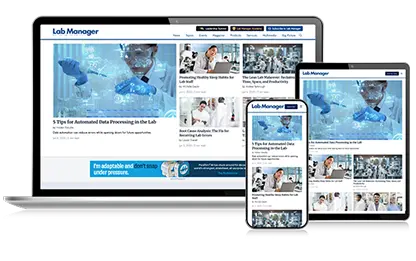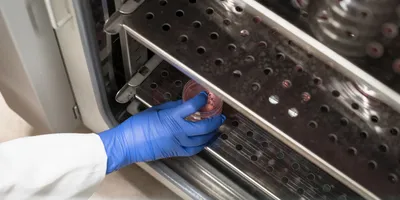Laboratory emergency plans should be developed at the earliest stages of design to ensure a seamless response in case of incidents. Proper planning enhances safety, minimizes damage, and protects personnel, making it crucial to integrate emergency procedures into the laboratory layout from the beginning. An effective laboratory emergency plan should encompass alarm systems, evacuation procedures, communication strategies, and coordination with emergency responders.
Key Components of a Laboratory Emergency Plan
To create a well-structured emergency plan, laboratories should incorporate the following essential elements:
1. Audible and Visible Alarm Activation
Emergency alarm systems must be both audible and visible to alert all personnel in the event of an emergency. These systems should be strategically placed throughout the facility to ensure maximum coverage, especially in high-risk areas such as chemical storage rooms and laboratory workstations. They should be designed to function even during power outages, incorporating battery backups or alternative power sources. Regular testing and maintenance are essential to ensure functionality and compliance with safety standards. These systems should:
- Comply with occupational safety and health standards to ensure immediate recognition.
- Be tested regularly to confirm functionality.
- Integrate with building-wide emergency communication systems for coordinated response efforts.
2. Evacuation and Building Re-Entry Procedures
Clearly defined evacuation procedures are essential to ensure a swift and organized exit from the laboratory. These procedures should be clearly outlined in emergency response plans and regularly reviewed to account for any changes in lab layout or operations. Every laboratory worker must be familiar with the designated exit routes and assembly points to minimize confusion during an emergency. Training sessions and drills should reinforce these procedures to ensure personnel can respond efficiently under stressful conditions. These procedures should include:
- Multiple designated exit routes with clearly marked signs.
- Staging areas for non-responding personnel to gather safely.
- Guidelines for re-entry authorization once the emergency has been resolved.
3. Periodic Emergency Drills
Regular emergency drills help ensure that all personnel are familiar with evacuation routes, emergency shutdown procedures, and roles during a crisis. These drills reinforce safety protocols, help identify potential weaknesses in emergency plans, and ensure that employees can respond effectively under high-pressure conditions. Best practices for drills include:
- Conducting biannual or quarterly drills based on risk levels.
- Running scenario-based training for different types of emergencies, such as chemical spills, fires, or power failures.
- Evaluating drill performance and making necessary improvements.
4. Documentation and Personnel Accountability
In the event of an emergency, accounting for all individuals in the facility is critical to ensure that no one is left behind and that emergency responders can focus their efforts effectively. Laboratories should implement a reliable personnel tracking system that includes visitor logs, electronic check-in systems, and real-time headcounts during evacuations. Additionally, designated team leaders should be responsible for verifying attendance at assembly points, coordinating with safety officers, and reporting missing persons to emergency responders. This process should be rehearsed regularly to improve efficiency and minimize confusion during actual emergencies. Laboratories should:
- Maintain a visitor log and sign-in sheets for easy personnel tracking.
- Assign safety marshals responsible for ensuring that all occupants evacuate safely.
- Establish a check-in system at staging areas to confirm the presence of employees.
5. Equipment Shutdown and Emergency Operations
To prevent additional hazards, laboratories should have pre-planned equipment shutdown procedures. These procedures should be clearly documented and easily accessible to all personnel. They must include step-by-step instructions for safely powering down critical laboratory equipment, such as fume hoods, gas lines, refrigeration units, and electrical devices. Each shutdown procedure should be tailored to specific equipment requirements and include emergency backup options if standard power sources fail. Additionally, laboratory staff should be trained regularly on these procedures to ensure a swift and coordinated response in case of an emergency. These procedures should:
- Identify critical equipment that must be turned off manually or automatically in case of an emergency.
- Be clearly posted in the lab and accessible to all personnel.
- Include emergency operation measures, such as backup power sources for critical laboratory functions.
6. Coordination with Emergency Responders
Laboratories must provide emergency responders with essential information to facilitate a safe and effective response. This includes detailed documentation on potential hazards, storage locations of hazardous materials, and emergency procedures specific to the laboratory. Clear communication with emergency personnel is crucial, ensuring they have access to updated safety data sheets (SDS) and floor plans indicating exit routes and high-risk zones. Designating a trained lab representative to liaise with first responders can streamline decision-making and reduce response times. Additionally, laboratories should conduct joint drills with emergency responders to familiarize them with lab-specific risks and procedures, enhancing overall preparedness and coordination.
- Details on the hazards, storage amounts, and locations of hazardous chemicals.
- Updated safety data sheets (SDS) for all dangerous substances.
- A designated communication officer to liaise with emergency response teams and ensure accurate information flow.
- Informing the authority having jurisdiction (AHJ), typically the fire department, of any modifications in laboratory storage or processes before they respond to an emergency.
7. Response Communication Plan
A well-defined response communication plan ensures efficient coordination among laboratory personnel and emergency responders by establishing clear roles, responsibilities, and communication protocols during an emergency. This plan should outline the chain of command, ensuring that all personnel understand whom to contact in different scenarios. Regular training and drills should reinforce these communication procedures, helping employees stay calm and follow established protocols when an actual emergency occurs. Proper documentation of response communication strategies, including written guidelines and digital resources, can further enhance preparedness and streamline decision-making. Key elements include:
- A designated spokesperson trained to interact with emergency personnel.
- Clear internal communication channels (e.g., emergency radios, phone trees, or mobile apps).
- Employee training to redirect all external inquiries to the designated spokesperson to avoid misinformation.
8. Emergency Instructions for Security Personnel
Laboratories should have clear instructions posted at entrances for after-hours security personnel to ensure that they can quickly respond to any emergencies, mitigate potential hazards, and communicate with the appropriate laboratory staff. These instructions should be prominently displayed, easy to understand, and updated regularly to reflect any changes in laboratory procedures or safety protocols. In addition to providing essential contact details, the instructions should include clear guidance on how to recognize potential risks, secure the area if necessary, and report incidents effectively to minimize damage and ensure a swift response. These instructions should:
- Provide contact details of laboratory supervisors in case of an emergency.
- Outline specific hazards within the lab.
- Explain emergency access restrictions to unauthorized personnel.
Incident Procedures: Handling Emergencies Effectively
A well-developed emergency action plan (EAP) ensures that employees understand their roles in responding to emergencies. The following procedures should be part of every laboratory’s emergency plan:
1. Evacuation Procedures and Staging Areas
- Clearly mark evacuation routes and ensure all employees are familiar with them.
- Identify staging areas for non-responding personnel to gather after evacuation.
- Assign team leaders to account for personnel at staging locations.
2. Protocols for Employees Managing Critical Operations
- Outline which staff members are authorized to shut down critical lab operations before evacuation.
- Ensure that these employees receive specialized training in emergency shutdown procedures.
- Establish a time limit for when these individuals must leave the premises.
3. Personnel Accountability After Evacuation
- Maintain an employee roll call system at evacuation points.
- Have designated safety officers confirm all employees are accounted for.
- Set procedures for reporting missing personnel to emergency responders immediately.
4. Emergency Medical and Rescue Procedures
- Train specific employees in basic first aid and CPR.
- Provide accessible first aid kits and eyewash stations in high-risk areas.
- Establish communication with local emergency medical services (EMS) to ensure rapid medical response.
5. Preferred Methods for Reporting Fires and Emergencies
- Use clearly posted emergency phone numbers for immediate reporting.
- Train personnel on how to activate alarm systems and fire extinguishers.
- Implement an automated notification system to alert all employees in real-time.
6. Emergency Contact Information
- Maintain a list of emergency contacts for laboratory supervisors, facility managers, and local emergency services.
- Post emergency numbers near exits and workstations for easy access.
- Ensure that designated personnel are available to answer questions and provide guidance during an emergency.
Conclusion: The Importance of Proactive Emergency Planning
Effective laboratory emergency planning is crucial to maintaining a safe work environment and minimizing risks associated with fires, chemical spills, and other hazards. By integrating comprehensive evacuation plans, communication strategies, and responder coordination, laboratories can ensure preparedness in the event of an emergency.
By developing, testing, and updating laboratory emergency plans regularly, organizations can protect their employees, reduce downtime, and enhance overall workplace safety and emergency readiness.
Laboratory emergency plans should be developed at the earliest stages of design to ensure a seamless response in case of incidents. Proper planning enhances safety, minimizes damage, and protects personnel, making it crucial to integrate emergency procedures into the laboratory layout from the beginning. An effective laboratory emergency plan should encompass alarm systems, evacuation procedures, communication strategies, and coordination with emergency responders.
Key Components of a Laboratory Emergency Plan
To create a well-structured emergency plan, laboratories should incorporate the following essential elements:
1. Audible and Visible Alarm Activation
Emergency alarm systems must be both audible and visible to alert all personnel in the event of an emergency. These systems should be strategically placed throughout the facility to ensure maximum coverage, especially in high-risk areas such as chemical storage rooms and laboratory workstations. They should be designed to function even during power outages, incorporating battery backups or alternative power sources. Regular testing and maintenance are essential to ensure functionality and compliance with safety standards. These systems should:
- Comply with occupational safety and health standards to ensure immediate recognition.
- Be tested regularly to confirm functionality.
- Integrate with building-wide emergency communication systems for coordinated response efforts.
2. Evacuation and Building Re-Entry Procedures
To continue reading this article, sign up for FREE to

Membership is FREE and provides you with instant access to eNewsletters, digital publications, article archives, and more.












